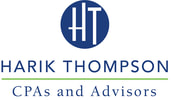|
Does it seem like your company's health care spending is equal to the gross national product of a small country? If you have a stake in employee benefits, you know that workforce wellness and benefits plans are changing at a rate faster than most can follow. Switching to a self-funded plan can help. You'll pay only for what you need and use. Zero-premium taxes and lower administration costs can lead to impressive savings. With employer self-funded plans, group administrators can design efficient and effective benefits programs that fit their budget and their employees' needs. This works well if you have multiple locations in several states. Self-funding plans offer a high level of flexibility and customization, allowing groups to select from an array of benefits plan configurations and administration options.
Here are some of your customization choices:
Self-insured plans are regulated by the Employee Retirement Income Security Act of 1974 — also known as ERISA — and are exempt from most laws regulating fully insured plans on a state level. Self-insured health care plans pay premium taxes and commissions on stop-loss premiums only, resulting in lower overall employer health care program costs. Profit margins and risk charges, typically associated with insurance carriers, are eliminated from the self-funded plan. Other economic advantages include:
Self-funding provides a great level of transparency by providing the group with monthly, quarterly and annual recaps of all costs associated with their plans, and that includes administration, savings from cost management programs, and premium and commission costs. While fully insured plans offer set premium costs and protect the group from large-claims exposure, stop-loss insurance can provide similar protection for self-insured plans. By selecting an amount of insurance based on a company's risk tolerance — on a specific or aggregate basis — stop-loss plans can offer the same level of protection. For employers who want to reduce health care spending by developing customized plans with appropriate wellness and disease management programs, self-funding can be an excellent solution. By understanding the drivers of cost increases, companies can explore and implement options to their health care programs that will result in reducing the trend of rising health care premiums. With the self-funded approach, you choose the benefits and extras. You'll have control without restrictions, because your plan doesn't need to adhere to many of the state mandates. This gives you the flexibility to create a plan that's perfect for your company. Give us a call to discuss what is right for your company and the best way to offer the benefits your employees want. Comments are closed.
|
Newsletter articles are posted every 2 weeks. If you would like to have our e-newsletter delivered directly to your inbox, please sign up. Your information is confidential; you can unsubscribe at any time. Subscribe. Categories
All
|
Proudly powered by Weebly

 RSS Feed
RSS Feed